Analysis and Prediction of Building Deformation Characteristics Induced by Geological Hazards
Abstract
1. Introduction
2. Hazard Overview
2.1. Project Overview
2.2. Geological Conditions
2.3. Monitoring Plan
3. Prediction of Settlement Stabilization
3.1. Prediction Method
- (1)
- Hyperbolic method
- (2)
- Exponential curve method
- (3)
- BP Neural Network
- (4)
- LSTM Neural Network
3.2. Data Selection and Processing
3.3. Model Evaluation Indicators
3.4. Model Results and Analysis
4. Deformation Characteristics of Buildings
4.1. Temporal Characteristics of Deformation
4.2. Spatial Characteristics of Deformation
5. Conclusions
- For building settlements triggered by urban geological disasters, the integration of the Akima interpolation method with a BP neural network effectively overcomes the adverse effects of data discontinuity. Compared with traditional empirical-formula-based methods, this combined approach more accurately captures settlement trends and achieves significantly higher prediction accuracy. The prediction results derived from the model provide a scientific basis for the dynamic assessment of building stability, thereby supporting the timely optimization and adjustment of restoration and reinforcement schemes to ensure construction safety.
- The building settlements induced by this geological disaster exhibit pronounced temporal staging and spatial heterogeneity. Substantial water–soil loss in the early stage, coupled with the different consolidation rates of sandy and clayey soils in the middle and late stages, jointly produced a three-phase settlement evolution process. In addition, water–soil loss was frequently accompanied by the development of finger-like preferential pathways, which aggravated localized settlement and caused significant spatially differentiated deformation within the building cluster.
Author Contributions
Funding
Data Availability Statement
Conflicts of Interest
References
- Yu, B.F.; Yan, J.X.; Li, Y.A.; Xing, H.X. Urban construction promotes geological disasters: Evidence from prediction of future urban road collapse scenario in Hangzhou, China. Georisk 2025, 19, 661–681. [Google Scholar] [CrossRef]
- Santi, P.; Manning, J.; Zhou, W.; Meza, P.; Colque, P. Geologic hazards of the Ocona river valley, Peru and the influence of small-scale mining. Nat. Hazards 2021, 108, 2679–2700. [Google Scholar] [CrossRef]
- Li, Z.; Zhang, Y.; Liang, S. Urban geological hazards and human engineering activities in Lanzhou City. J. Lanzhou Univ. Nat. Sci. 2014, 50, 588–593. [Google Scholar]
- Li, Y.; Zhuang, Y.; Cai, G.; Liu, S.; Zhang, Z. Urban geological work-A new area of national geological work. Geol. Bull. China 2003, 22, 589–596. [Google Scholar]
- Duan, X.; Zhu, J.; Dong, Q.; Chen, Z. Discussion of the Correlation between Human Engineering Activities and Geological Disasters in Yan'an Area. J. Catastrophology 2017, 32, 106–110. [Google Scholar]
- Yin, Y.; Zhang, Z.; Zhang, K. Land subsidence and countermeasures for its prevention in China. Chin. J. Geol. Hazard Control. 2005, 16, 1–8. [Google Scholar]
- Yi, L.; Wang, J.; Shao, C.; Guo, J.; Jiang, Y.; Bo, L. Land Subsidence Disaster Survey and Its Economic Loss Assessment in Tianjin, China. Nat. Hazards Rev. 2010, 11, 35–41. [Google Scholar] [CrossRef]
- Jin, J.; Pan, M. Status of Land Subsidence Damages and Strategy for Disaster Prevention and Mitigation in China. J. Catastrophology 2007, 22, 117–120. [Google Scholar]
- Chen, D.; Tang, L.; Guo, J. Analysis and treatment of an uneven settlement accident of a residential building. Ind. Constr. 2011, 41, 136–139. [Google Scholar]
- Chen, D.; Cao, R.; Shi, C.; Dong, S.; Hu, J. Reason and treatment of an uneven foundation settlement accident of a bottom frame structure house. Build. Struct. 2015, 45, 43. [Google Scholar]
- Pan, L.; Xie, X. Observational settlement prediction by curve fitting methods. Rock Soil Mech. 2004, 25, 1053–1058. [Google Scholar]
- Yang, T.; Li, G.; Yang, W. Settlement prediction of stage constructed embankment on soft groundbased on the hyperbolic method. Rock Soil Mech. 2004, 25, 1551–1554. [Google Scholar]
- Zhou, X.; Zhang, Q.; Zeng, Y.; Sun, G. Contrastive Analysis on Exponential Fitting and Hyperbolic Fitting in Settlement Prediction of Soft Foundation. Explor. Eng. 2011, 38, 51–53+58. [Google Scholar]
- Chen, S.; Wang, X.; Xu, X.; Yu, F.; Qin, S. Three-point modified exponential curve method for predicting subgrade settlements. Rock Soil Mech. 2011, 32, 3355–3360. [Google Scholar]
- Zhang, W.; Guo, Y. Prediction model of building settlement based on BP neural network. Eng. Surv. Mapp. 2013, 22, 52–56. [Google Scholar]
- Tao, P.; Anying, Y.; Xing, L.; Qin, Y. Prediction of soft ground settlement based on BP neural network-grey system united model. Rock Soil Mech. 2005, 26, 1810–1814. [Google Scholar]
- Deng, C.; Ouyang, B.; Chen, Y. A buliding settlement prediction model based on PSO-BP neural network. Sci. Surv. Mapp. 2018, 43, 27. [Google Scholar]
- Xu, Q.; Pu, C.; Zhao, K.; He, P.; Zhang, H.; Liu, J. Time Series InSAR Monitoring and Analysis of Spatiotemporal Evolution Characteristics of Land Subsidence in Yanan New District. Geomat. Inf. Sci. Wuhan Univ. 2021, 46, 957–969. [Google Scholar]
- Liu, Z.; Wang, Y.; Ke, X.; Luo, X. Distribution characteristics and causes of land subsidence in Nansha District, Guangzhou. Chin. J. Geol. Hazard Control. 2023, 34, 49–57. [Google Scholar]
- Basheer, I.A.; Hajmeer, M. Artificial neural networks: Fundamentals, computing, design, and application. J. Microbiol. Methods 2000, 43, 3–31. [Google Scholar] [CrossRef]
- Wang, Z.-L.; Li, Y.-C.; Shen, R.F. Correction of soil parameters in calculation of embankment settlement using a BP network back-analysis model. Eng. Geol. 2007, 91, 168–177. [Google Scholar] [CrossRef]
- JGJ8-2016; Code for Deformation Measurement of Building and Structure. Ministry of Housing and Urban-Rural Development of the People’s Republic of China: Beijing, China, 2007.
- Akima, H. A new method of interpolation and smooth curve fitting based on local procedures. JACM 1970, 17, 589–602. [Google Scholar] [CrossRef]
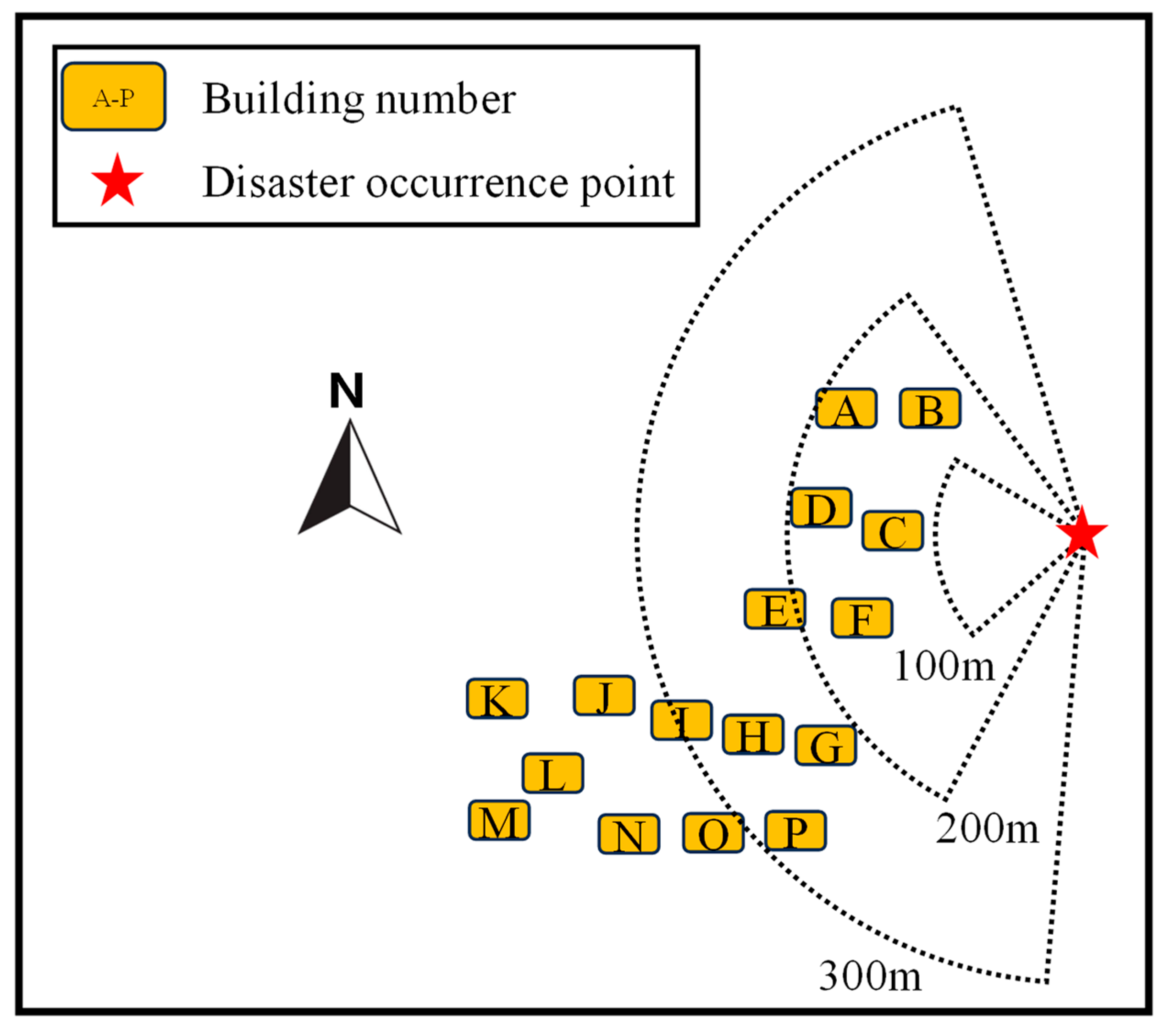
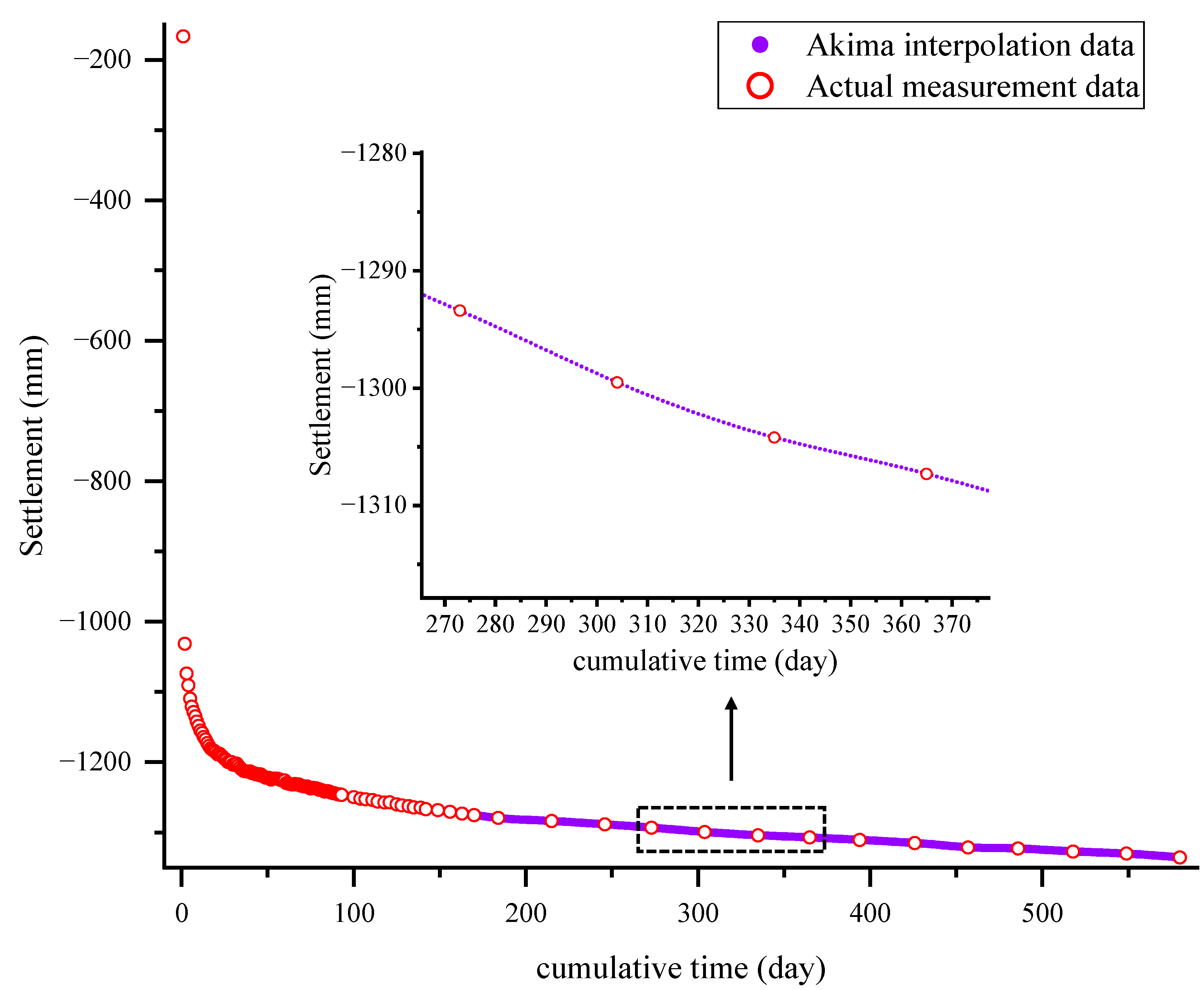
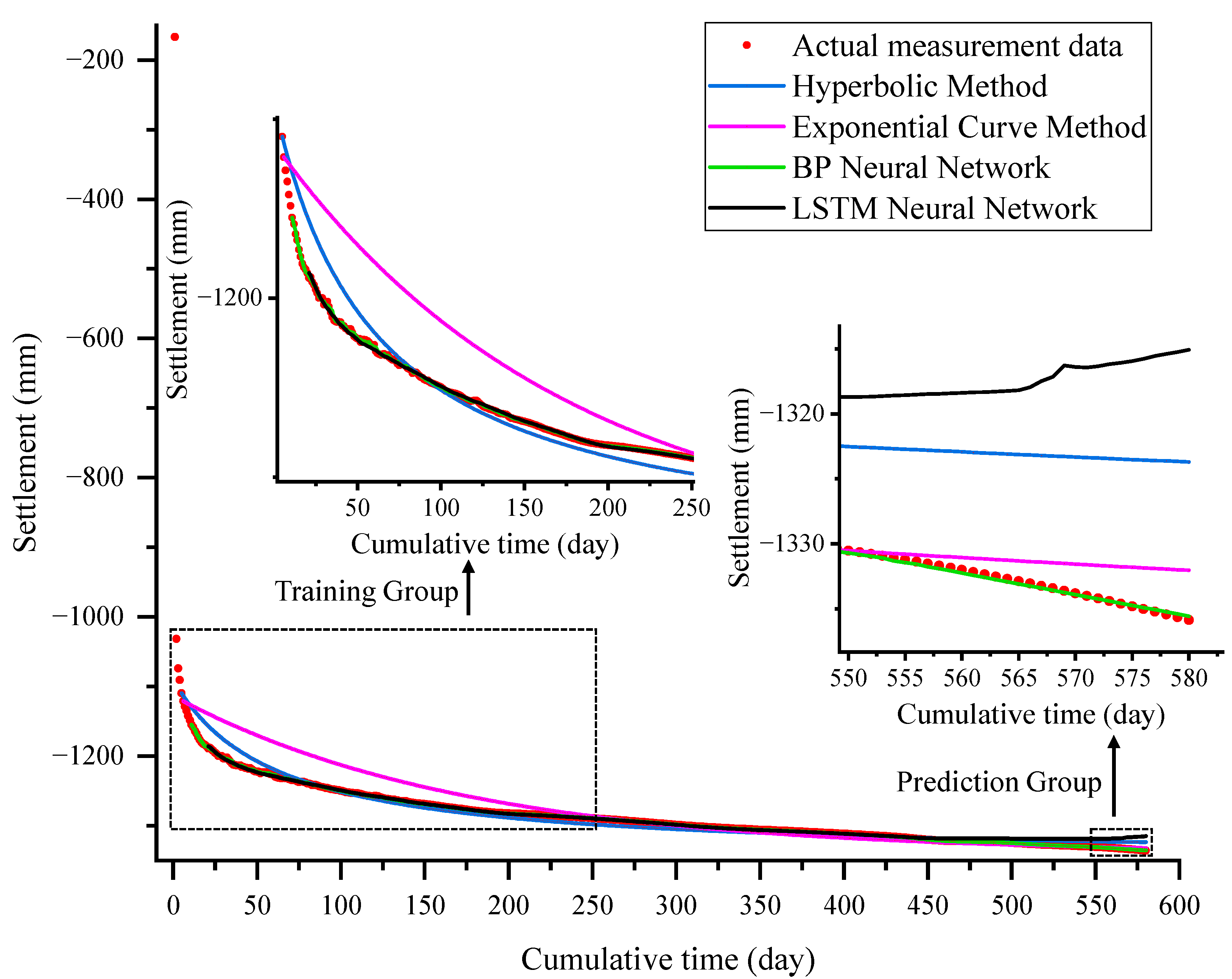
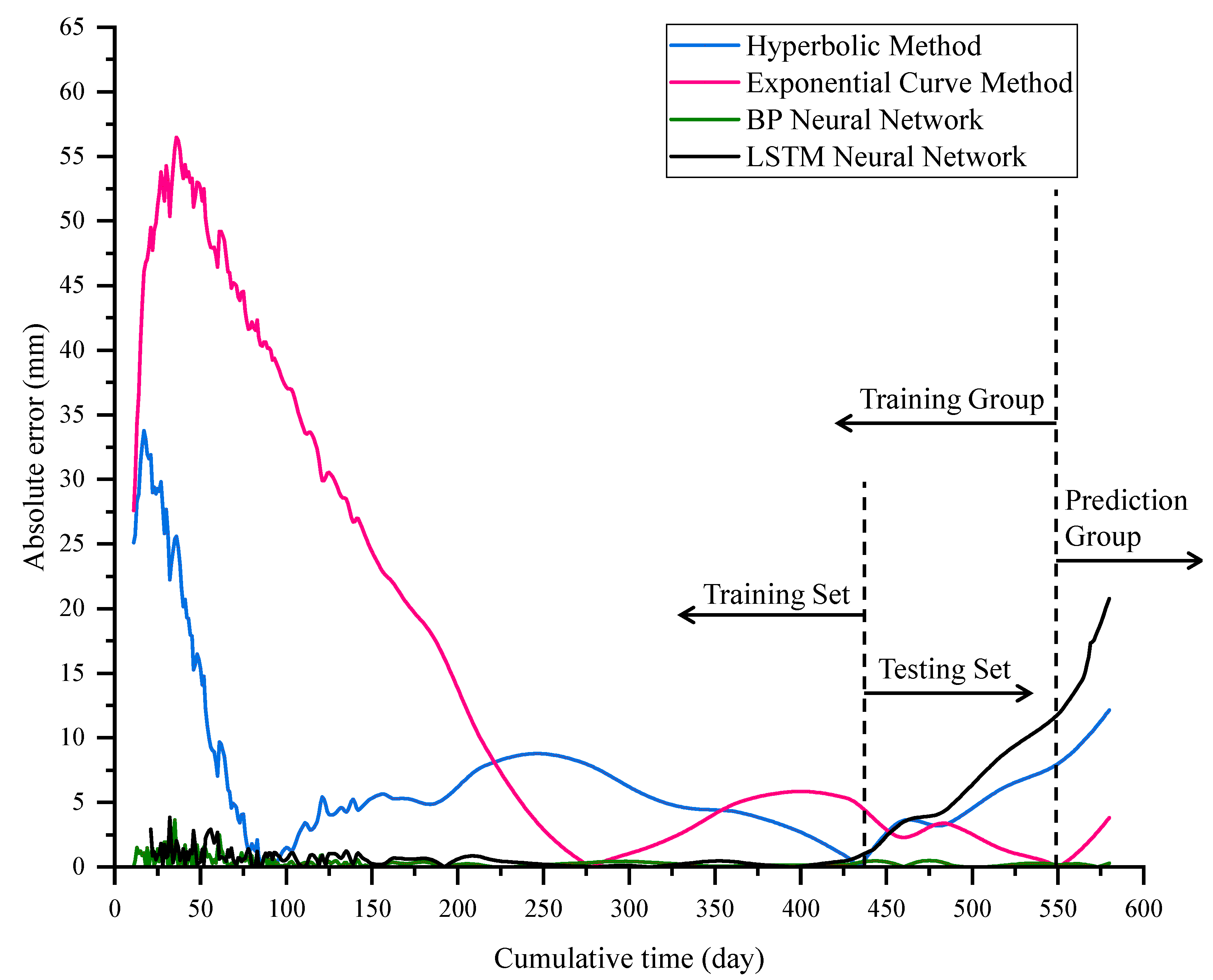
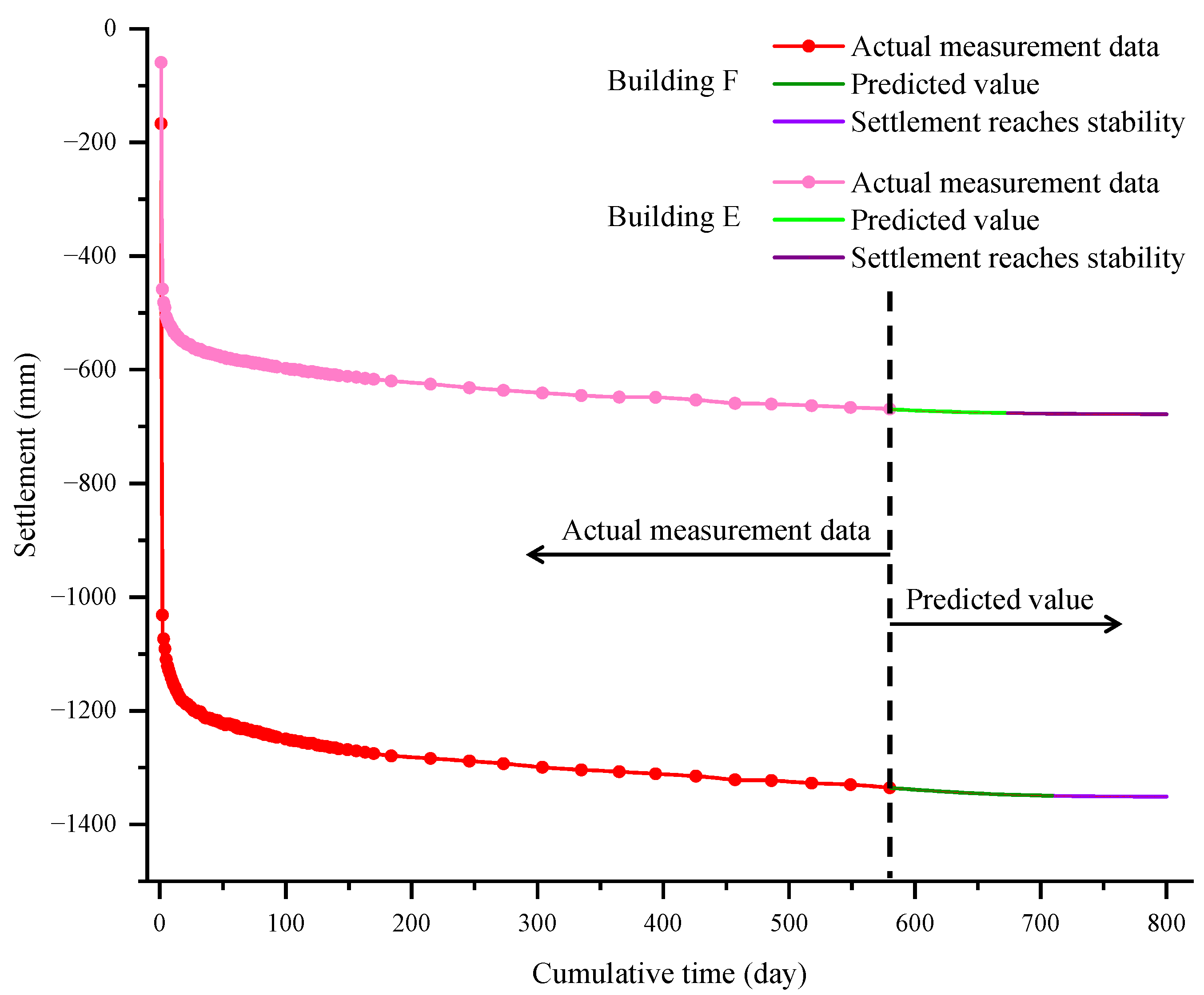
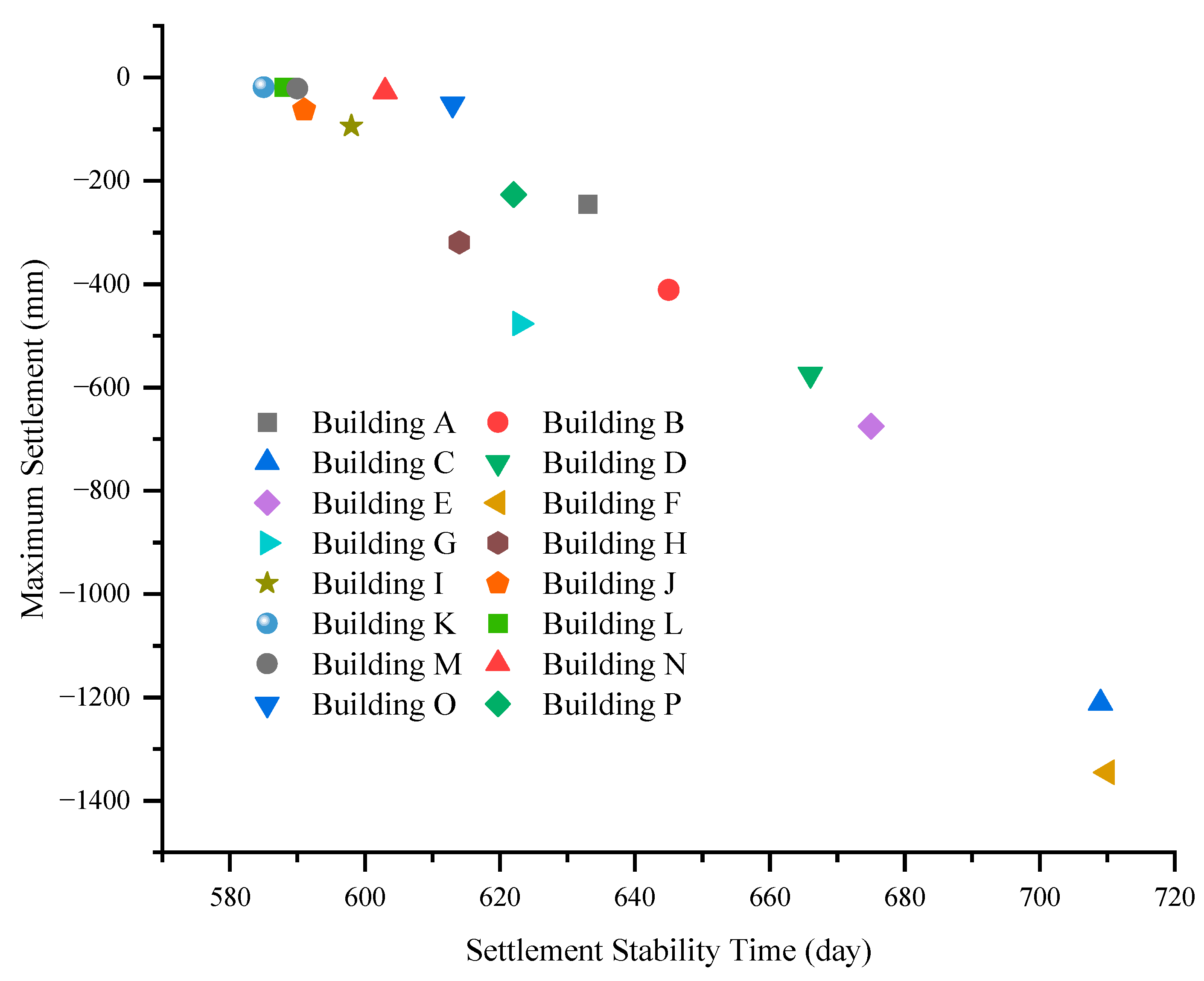
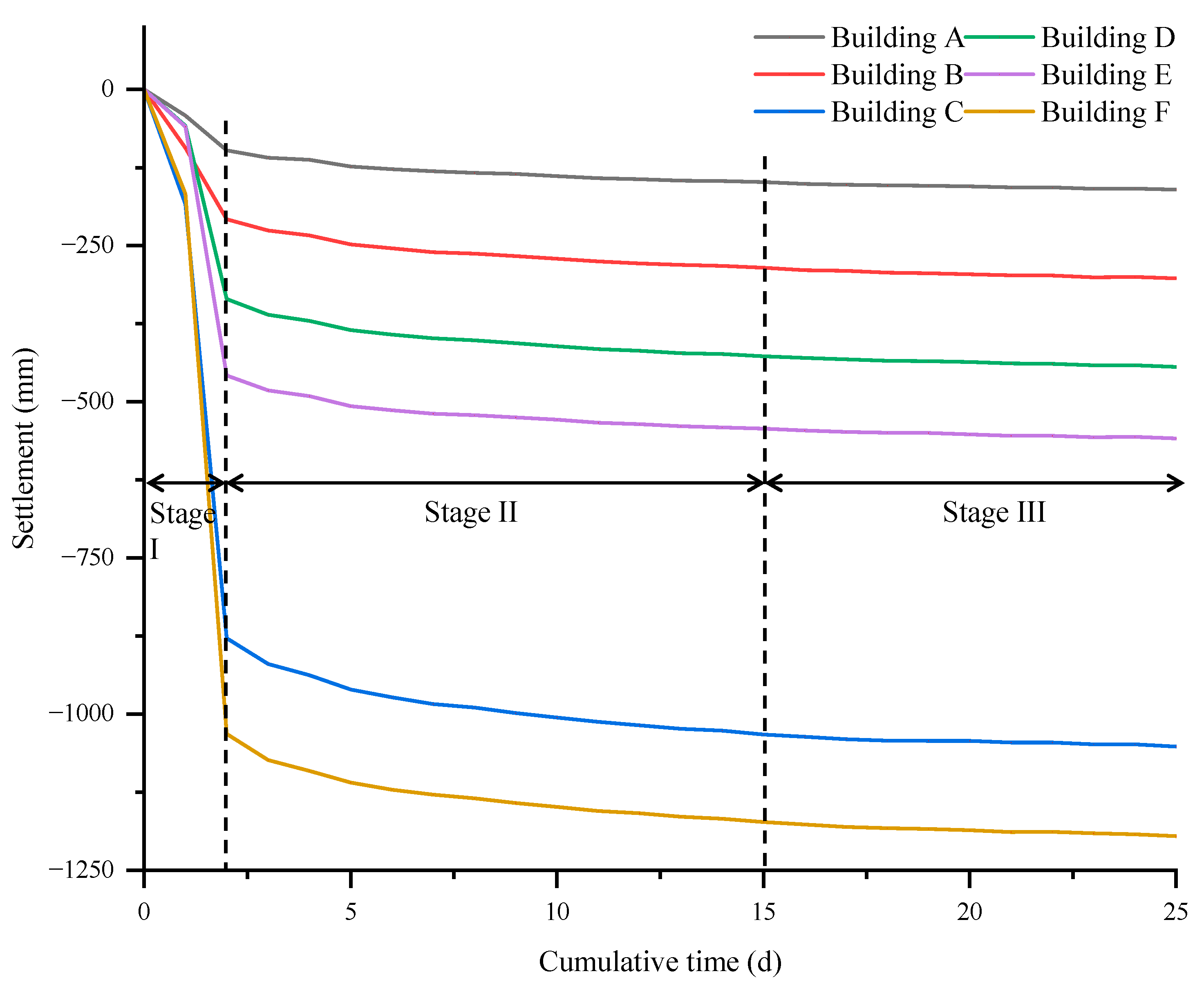
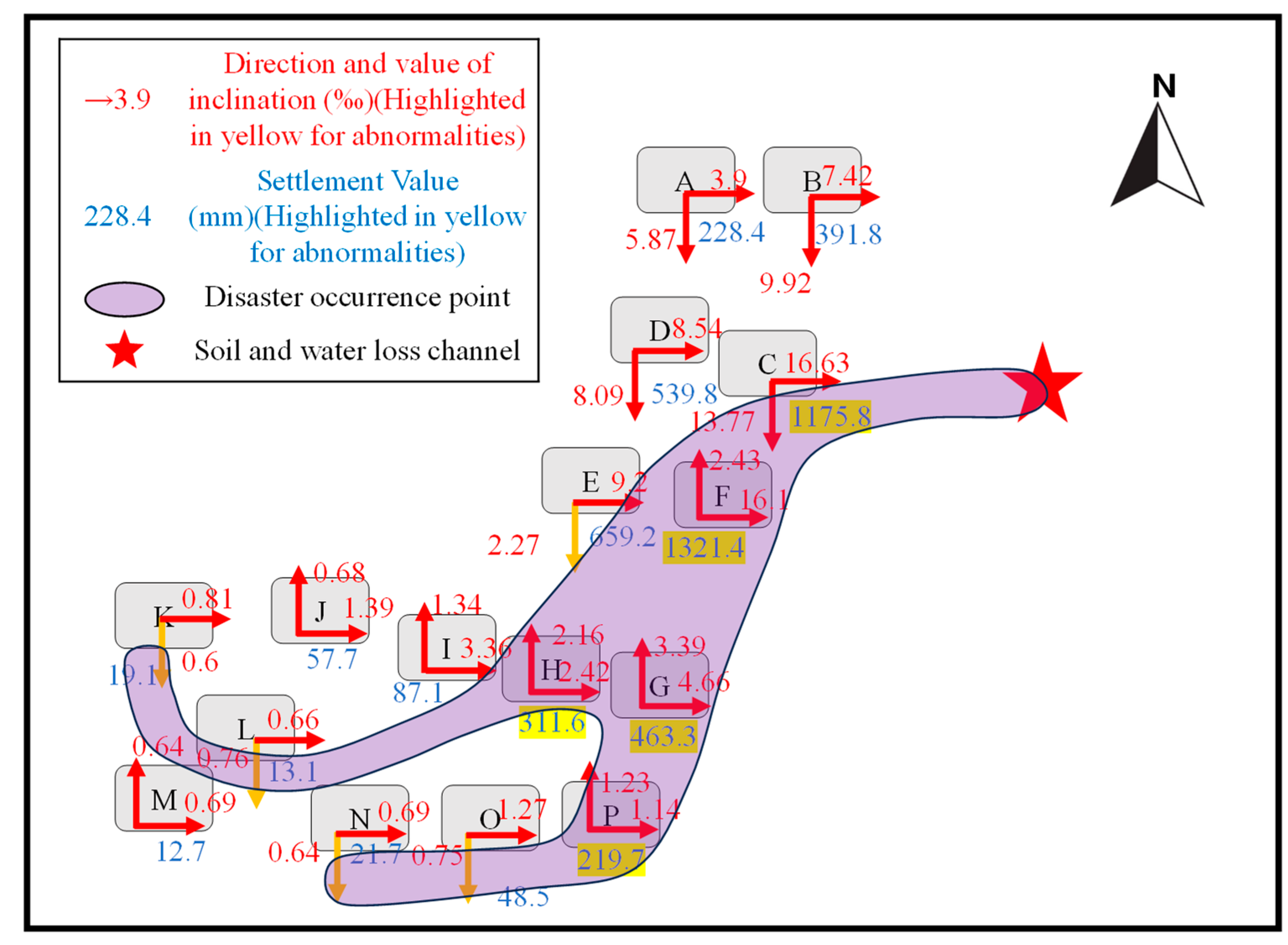
| Model | MAE | RMSE | R2 |
|---|---|---|---|
| Hyperbolic Method | 6.6308 | 8.8362 | 0.9433 |
| Exponential Curve Method | 13.9910 | 21.7631 | 0.6564 |
| BP Neural Network | 0.2979 | 0.4532 | 0.985 |
| LSTM Neural Network | 8.1343 | 8.4168 | −27.915 |
| Model | MAE | RMSE | R2 | |||
|---|---|---|---|---|---|---|
| Training Set | Testing Set | Training Set | Testing Set | Training Set | Testing Set | |
| BP Neural Network | 0.324 | 0.226 | 0.5 | 0.281 | 0.982 | 0.968 |
| LSTM Neural Network | 0.462 | 1.991 | 0.674 | 2.048 | 0.999 | 0.34 |
Disclaimer/Publisher’s Note: The statements, opinions and data contained in all publications are solely those of the individual author(s) and contributor(s) and not of MDPI and/or the editor(s). MDPI and/or the editor(s) disclaim responsibility for any injury to people or property resulting from any ideas, methods, instructions or products referred to in the content. |
© 2025 by the authors. Licensee MDPI, Basel, Switzerland. This article is an open access article distributed under the terms and conditions of the Creative Commons Attribution (CC BY) license (https://creativecommons.org/licenses/by/4.0/).
Share and Cite
Cheng, X.; Su, Q.; Liu, J.; Sun, J.; Luo, T.; Zheng, G. Analysis and Prediction of Building Deformation Characteristics Induced by Geological Hazards. Buildings 2025, 15, 3472. https://doi.org/10.3390/buildings15193472
Cheng X, Su Q, Liu J, Sun J, Luo T, Zheng G. Analysis and Prediction of Building Deformation Characteristics Induced by Geological Hazards. Buildings. 2025; 15(19):3472. https://doi.org/10.3390/buildings15193472
Chicago/Turabian StyleCheng, Xuesong, Qingyu Su, Jingjin Liu, Jibin Sun, Tianyi Luo, and Gang Zheng. 2025. "Analysis and Prediction of Building Deformation Characteristics Induced by Geological Hazards" Buildings 15, no. 19: 3472. https://doi.org/10.3390/buildings15193472
APA StyleCheng, X., Su, Q., Liu, J., Sun, J., Luo, T., & Zheng, G. (2025). Analysis and Prediction of Building Deformation Characteristics Induced by Geological Hazards. Buildings, 15(19), 3472. https://doi.org/10.3390/buildings15193472






